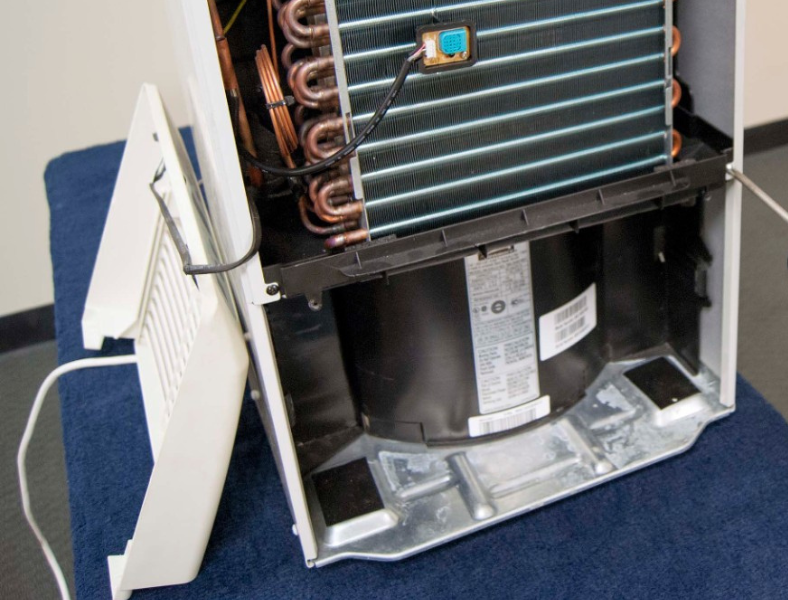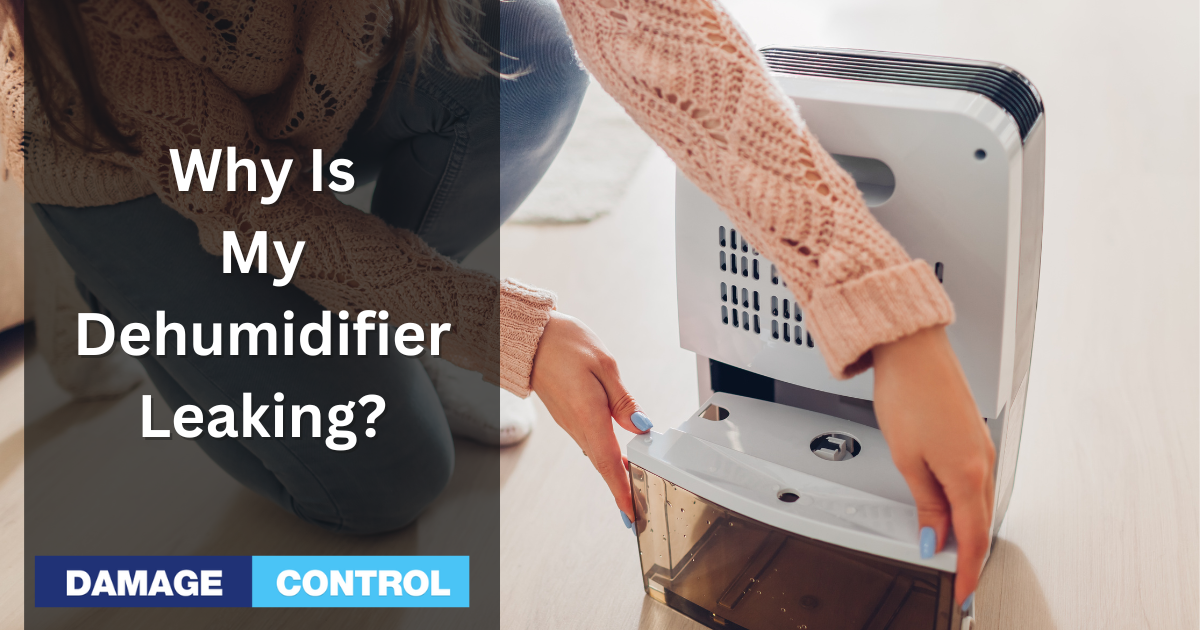A cooler feeling room via dehumidification is one of the key roles of a dehumidifier in keeping our homes comfortable. However, what happens when this essential device starts leaking? It's a common yet frustrating issue many face. Don't fret! This guide is here to assist you in tackling that troublesome leak. Dehumidifiers are crucial in maintaining a breathable, allergen-free home environment, so promptly addressing malfunctions to restore efficiency is important.
Common Dehumidifier Issues
 Many things can cause leaky dehumidifiers. Here's a quick list:
Many things can cause leaky dehumidifiers. Here's a quick list:
- Full water tank
- Wrong placement
- Cracked or damaged parts
- Loose hose connections
- Clogged filter
In this article, we'll deeply dive into fixing that leaky dehumidifier. We'll guide you through troubleshooting steps and solutions. Let's dive in and get that dehumidifier back in action!
Understanding Dehumidifiers
Basic Functioning
Dehumidifiers are handy machines that help improve our indoor environment. Let's dive into how they work!
How Dehumidifiers Work
These devices work by sucking mugginess from the air. They pull in air, extract the moisture, and then release the dry air into the room. This helps reduce dampness and prevents the growth of mold and mildew.
Components of a Dehumidifier
Dehumidifiers have several key parts that make them work:
- Fan: Circulates air in and out of the device.
- Cooling coils: Cool the air, causing moisture to condense.
- Heater: Warms the air before it's released back into the room.
- Water tank: Gathers up the condensed water to get rid of it.
Types of Dehumidifiers
There are two main types of dehumidifiers:
- Refrigerant dehumidifiers
- Desiccant dehumidifiers
Refrigerant Dehumidifiers
Refrigerant dehumidifiers use a cooling process to remove moisture from the air. They draw in moist air, which passes over cold coils. This causes the moisture to condense and collect in the water tank. After that, the air is reheated and released back into the room, reducing the overall humidity.
These dehumidifiers are most effective in warmer climates, where the air is warm and humid.
Desiccant Dehumidifiers
Desiccant dehumidifiers use moisture-absorbing materials, like silica gel, to remove moisture from the air. They have a special wheel that rotates and absorbs moisture from the incoming air. The moisture is then released outside the room through a vent, leaving the indoor air dry.
These dehumidifiers work well in colder spaces because they don't rely on cooling coils, which can become less effective at low temperatures.
Common Causes of Dehumidifier Leaks
Dehumidifier leaks often occur due to incorrect setup, stemming from simple mistakes that can be easily rectified. Two of the most common errors in setup that lead to leaking are improper leveling and improper hose connections. When a dehumidifier isn't leveled correctly, it's prone to leak.
To prevent this, it's important to use a level to check and ensure that the dehumidifier is sitting flat. Another frequent cause of leaks is the improper connection of hoses. It is essential to double-check the hoses to ensure they are connected correctly and securely. Loose hose connections are a common culprit for messy leaks and can be easily avoided with regular maintenance.
Damaged or Worn-Out Components
Dehumidifiers can wear out over time. Let's look at some parts that may cause leaks when they're damaged.
The water tank is vital! Inspect it for cracks or damage. If it's broken, replace it to stop those leaks. Hoses can get damaged, too. Check for cracks, kinks, or holes. Replace them if needed.
Seals and gaskets keep things watertight. But they can wear out. Inspect them and replace any that look worn.
Frozen Coils
Frozen coils are a common culprit. Let's see why they freeze and how they lead to leaks.
Causes of Frozen Coils
Coils freeze for a few reasons:
- Low room temperature
- Low refrigerant levels
- Dirty air filters
How Frozen Coils Lead to Leaks
When coils freeze, they form ice. As the ice melts, it can cause leaks. Keep those coils ice-free for a leak-free dehumidifier!
Blocked Air Filters
Air filters play a big role. Let's learn why they're important and how they can cause leaks.
Importance of Air Filters
Filters keep dirt and dust out. They protect your dehumidifier and help it run efficiently.
How Blocked Air Filters Cause Leaks
A dirty filter blocks airflow. This can cause the coils to freeze, which leads to leaks. Clean those filters for a happy, leak-free dehumidifier!
Troubleshooting Dehumidifier Leaks
Let's get to the bottom of that leaky dehumidifier! Here's a step-by-step guide to help you troubleshoot and fix the problem. Before diving into repairs, take a closer look at your dehumidifier. Examine the unit for any visible damage.
Look for cracks, broken parts, or signs of wear. Make a note of anything that seems off. Ensure that hoses are connected properly and securely. Tighten any loose connections to prevent leaks.
Cleaning and Maintenance
A little TLC can go a long way! Keep your dehumidifier clean and well-maintained to avoid leaks.
Remove the air filter and clean it according to the manufacturer's instructions. A clean filter will improve airflow and prevent coil freezing. If you find frozen coils, turn off the dehumidifier and let the ice melt. Be sure to place a towel underneath to catch any water. Once the ice is gone, address any underlying issues that caused the freezing.
If your dehumidifier has a condensate pump, clean it regularly. This will ensure that it pumps water out efficiently and prevents leaks.
Sometimes, parts need to be repaired or replaced. Here's what to do. If you find any damaged hoses, replace them. New hoses will keep your dehumidifier leak-free. If seals or gaskets are worn out, replace them. This will help maintain a watertight seal and prevent leaks.
Conclusion
Dehumidifier leaks can be a nuisance, but they're completely preventable with proper care and attention. You'll keep your home dry and comfortable by understanding your dehumidifier's components, troubleshooting issues, and performing regular maintenance. Remember, sometimes an upgrade is the best solution for persistent problems. Take charge of your indoor environment, and enjoy a leak-free, cozy space for years!

